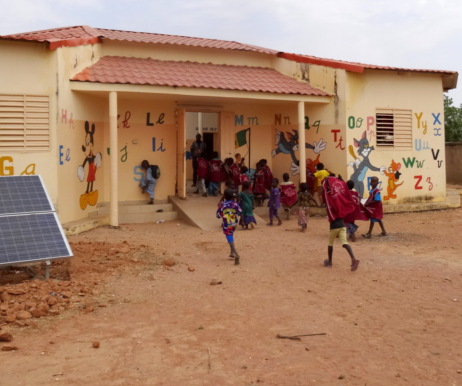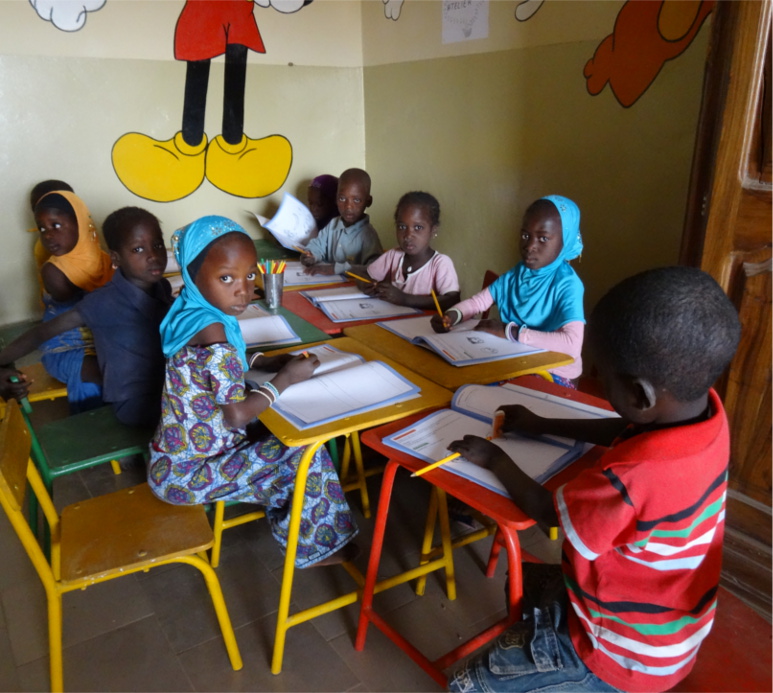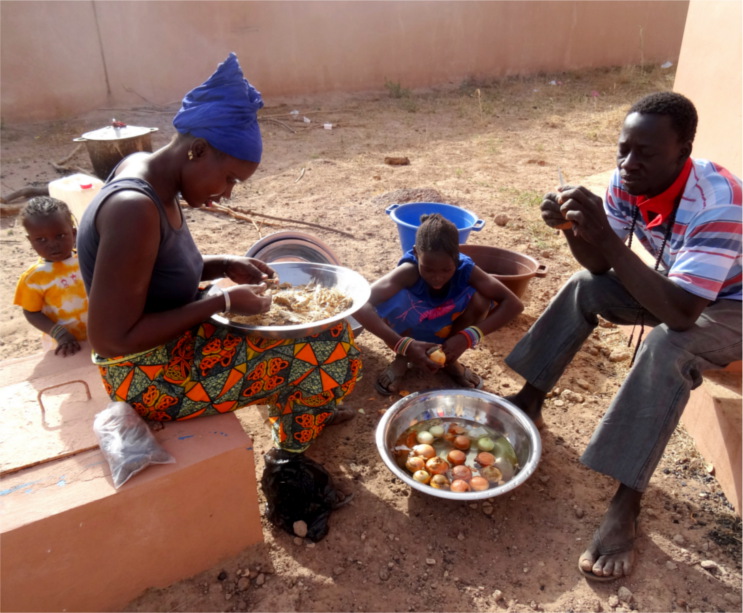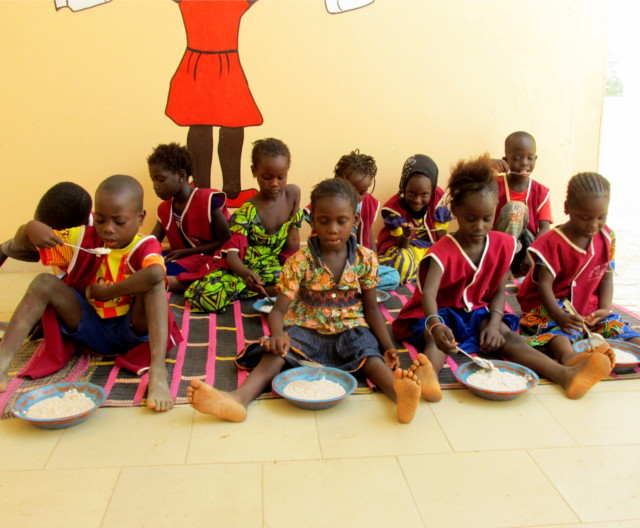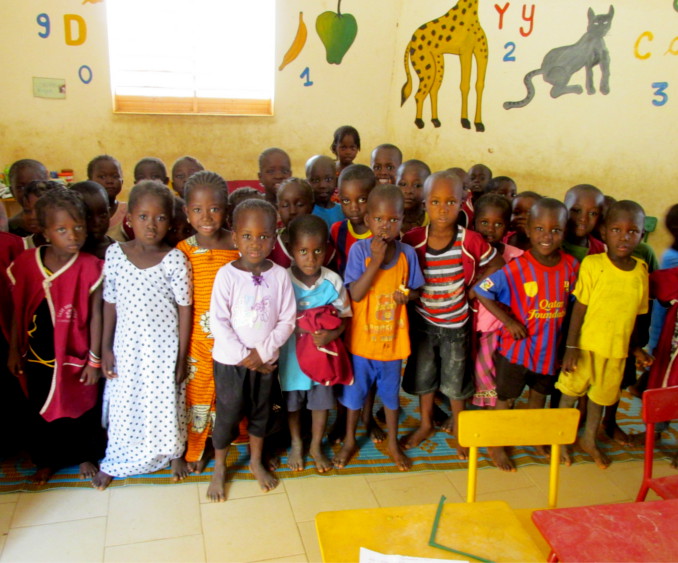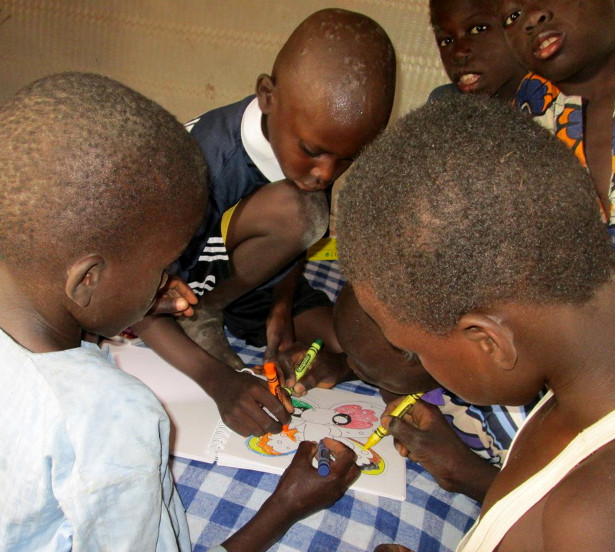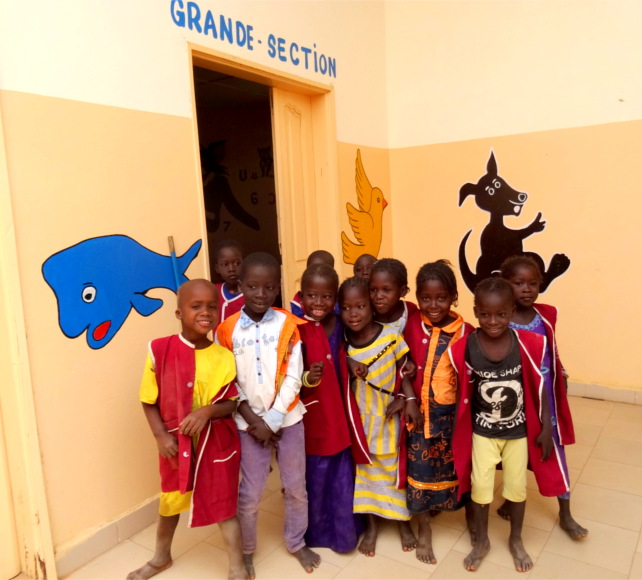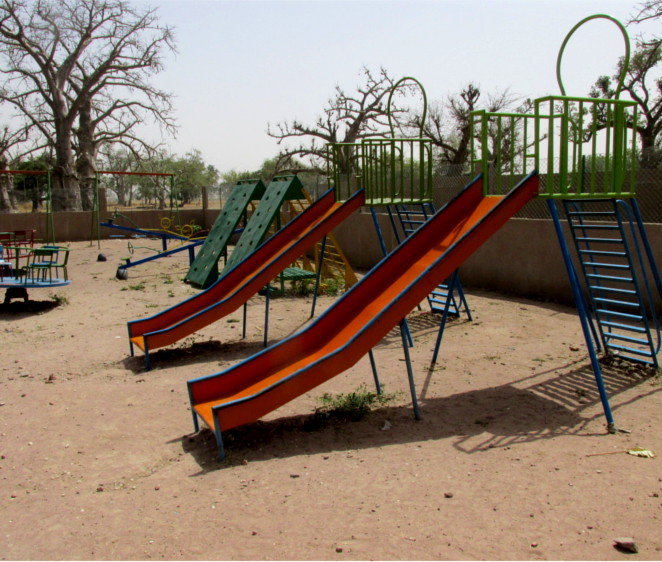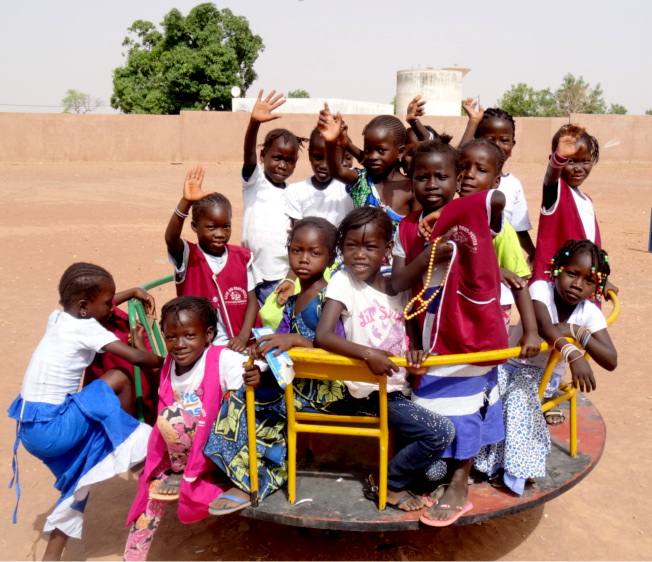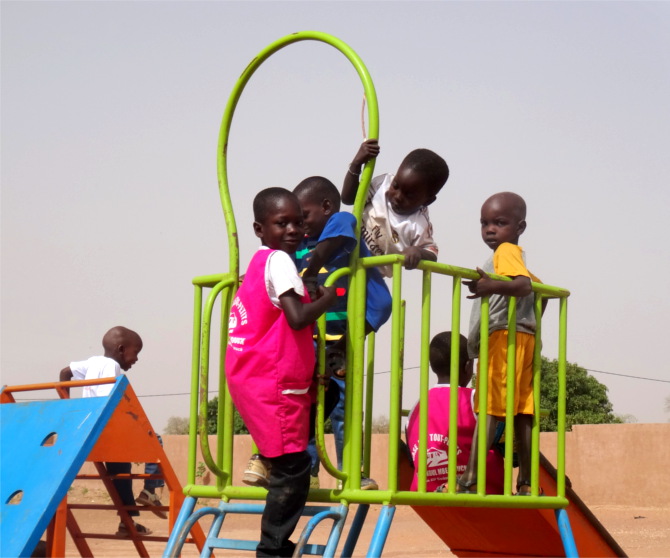Education: The toddlers' huts
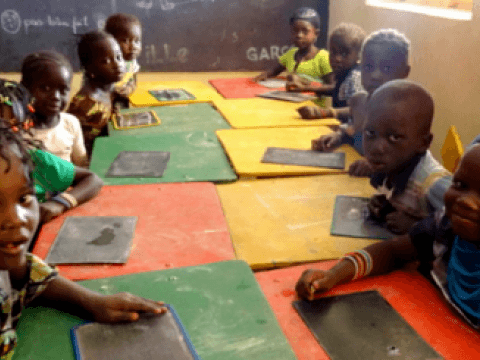
Young children are one of World Vision's areas of greatest focus, particularly around Kaffrine in Senegal. Our teams will go the extra mile for even the tiniest of tots, to improve their nutrition, access to quality education and protection. Our initiatives are in keeping with the Declaration of the World Forum on Education held in Dakar in 2000, which underlined the need to support and improve the care and development of young children - especially the most vulnerable and disadvantaged. Getting involved in their lives from the most tender age can produce many results.
How the Toddlers' Huts work
The Toddlers' Huts throw open their doors to children aged 2-5 years. The environment they find inside is safe and pleasant, a place where the learning programme will encourage their development and prepare them to eventually go to school. However, they can only offer 150 places and these are snapped up very quickly - both parents and children see to that! Not unlike kindergartens in Europe, the Huts are managed and staffed by professionals, with the assistance of trained volunteers. The children progress through three age-levels: small section, medium section and big section. The tuition and activities are tailored to the needs and ages of the children.
For example, the classroom language for the youngest children is Wolof, the one common to all ethnic groups. Learning activities such as colouring and singing ensure that everyone gets involved. And tracing letters is how they take their first steps towards being able to write. For those who have reached Big Section and are looking forward to entering school the following year, the teachers work on their knowledge of French and their first notions of reading. They also spend time developing dexterity, for example by making puppets. The priority is to strike just the right balance of learning and play so that they keep coming back for more.
Toddlers taking great strides for the community
The Huts have a real impact on community life and the well-being of children.
A nutrition programme designed for rapidly growing children runs hand-in-hand with the learning activities at the Huts. Three days a week a nutritious balanced meal is served by local women. Previously, during times of hunger, the economic situation of families was such that they could not always provide regular and suitable meals. But now, boosted by the new regime their concentration lasts all day and they have energy left over for games and sports.
The results for learning and education are the most striking. The children immediately begin to pick up life-skills that help them to communicate, share and socialise. The songs and games even teach them basic hygiene (eg handwashing) - such skills and practices are then reproduced at home and they take a hold in the community.
What's more, the foundations are laid for the children's school skills. The realities of local life are paramount in the way that the teachers plan the learning. They concentrate on French, motor skills, tracing and the first steps towards literacy. They end up with a clear head start when the time comes to enrol for school. As one of the Hut teachers can testify: "It's unusual to see children reaching school-age with such ability, especially in this area".
The cloud on this horizon is that the 150 children who are lucky enough to gain a place at one of the Huts in Nguer Mandakh or Dioly Mandakh must make do with just one teacher between all of them. World Vision's response has been to recruit and train teaching assistants to staff the sites, but the challenge of filling teaching posts remains a pressing issue nationwide.
Furthermore, children find their feet at school faster after the Hut. Parents are the first to notice the positive impact of learning activities and they soon get on board with keeping up the school attendance. No wonder then that school intake has risen dramatically in the vicinity of the Toddlers' Huts. They are on the frontline of the struggle to promote schooling in Senegal, especially in the Kaffrine area.
The atmosphere is fun and there are loads of games to keep the children stimulated every single day. Their eagerness to go the Toddlers' Hut every morning is not lost on the parents, who appreciate the adult supervision of the environment. It's a stark contrast to previously, when small children were sometimes left at a loose end to get into scrapes while their parents were at work.
The Huts are a ground-breaking innovation that has had a very positive effect on the community and earned the appreciation of local people. They have taken it upon themselves to look after the facilities and administration when required. This is how one imam describes his involvement with the programme in Kathiotte: "We've been fortunate enough to start a Hut in our village, so we've got to keep on top of sending the kids there and maintaining the premises." Such remarks are typical of the will of the community to take ownership of the facilities, given that they do so much to meet the needs of local people.
With World Vision France (Vision du Monde) support, Diokoul Mbelbouck, Dioly Mandakh and Nguer Mandakh are hopefully only the first of many villages in Diokoul that will get a Hut up and running.
Photos Credits: Vision du Monde
